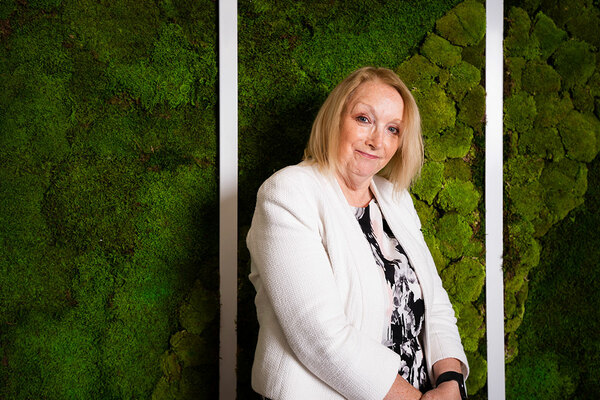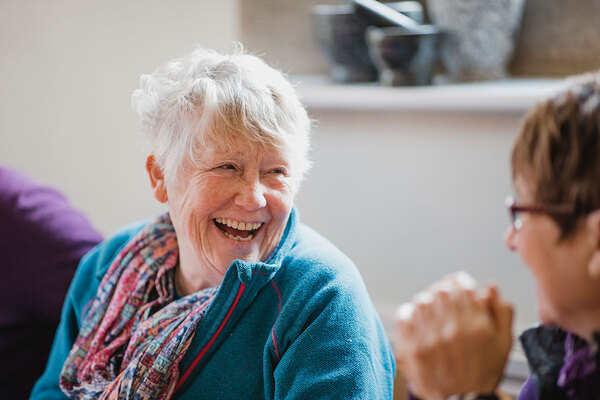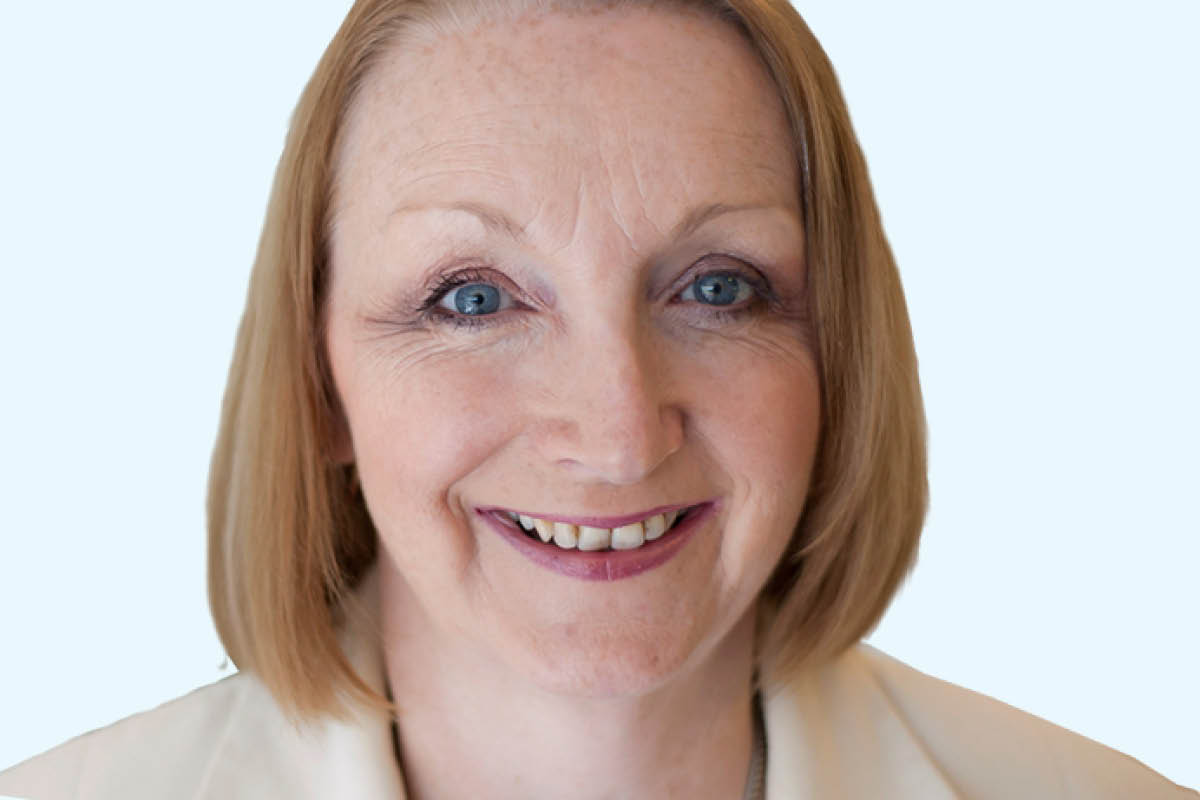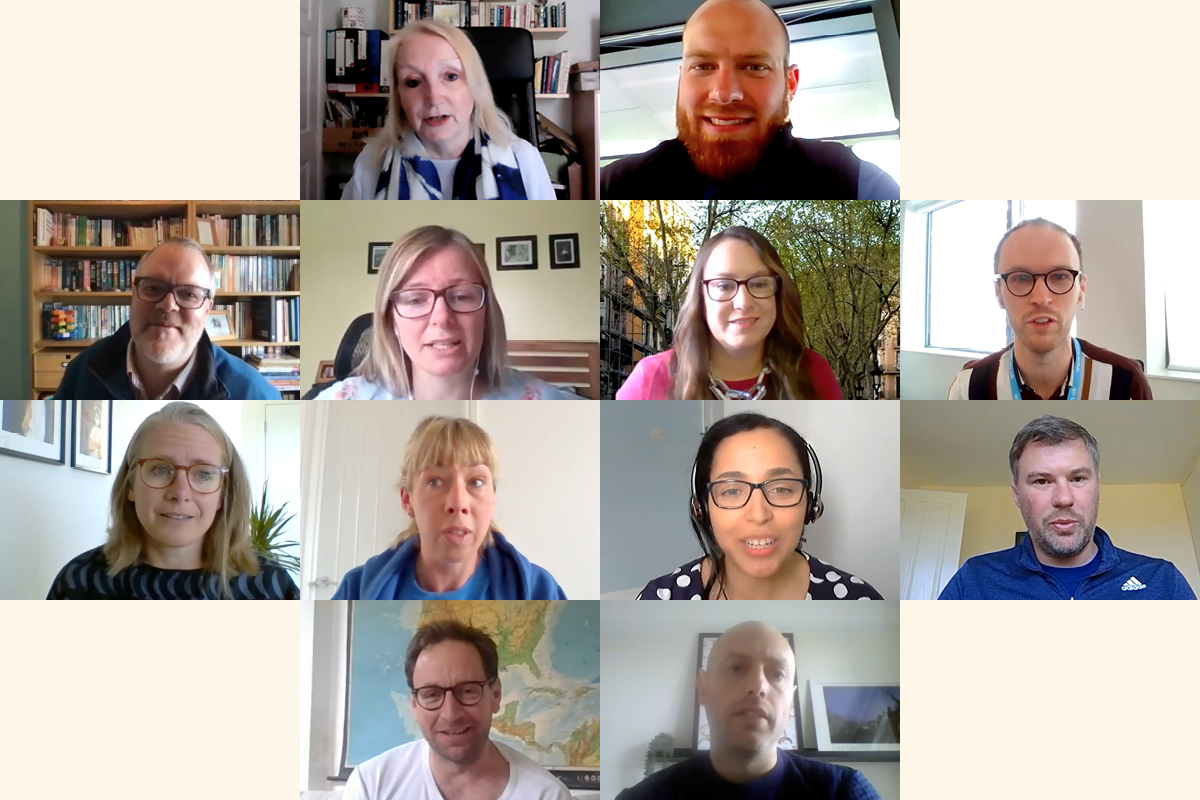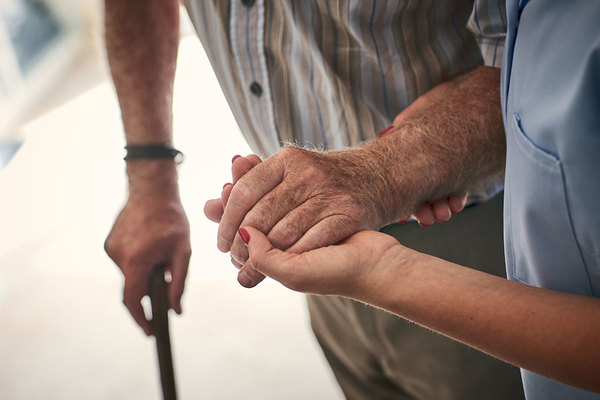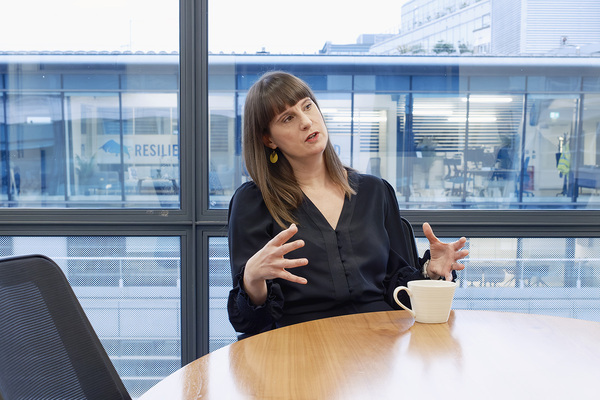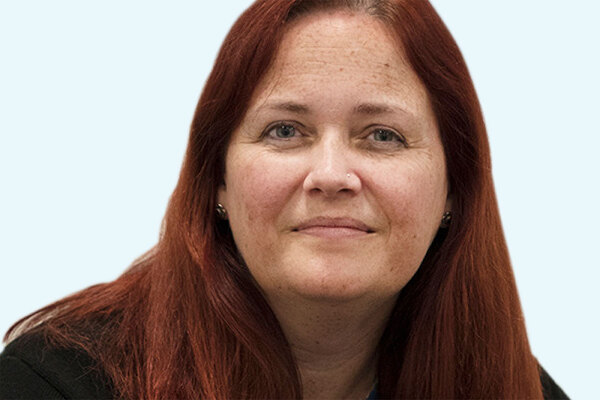The pandemic and mental health: what are the next steps for building a wellness strategy?
A discussion hosted by Inside Housing, in association with HomeLINK, explores the lessons learned over the past year and how they should guide wellness strategies moving forward. Illustration by Neil Webb
In association with:
A discussion hosted by Inside Housing, in association with HomeLINK, explores the lessons learned over the past year and how they should guide wellness strategies moving forward. Illustration by Neil Webb
The COVID-19 pandemic has brought to the fore the nation’s mental health challenge. Thousands of people across the country have had to navigate through multiple lockdowns, which have caused prolonged isolation, loneliness and fear.
Social housing was no exception, with the pandemic exacerbating the issue. Of course, mental health was on the radar before the pandemic. A 2018 study of the sector by mental health charity Mind, for example, found that one in three social housing residents experiences mental health issues.
Against this backdrop, Inside Housing hosted a virtual roundtable during last month’s Mental Health Awareness Week. The discussion aimed to find out from providers what they have seen and learned over the past year –
and how that might inform wellness strategies.
Kick-starting the discussion, Inside Housing editor Martin Hilditch asks participants to reflect on the past year, including how the pandemic might shape their well-being and mental health strategies.
A worsening crisis
“We haven’t yet felt the full impact of the year that’s gone by,” says Andrew van Doorn, chief executive of HACT, as he explains that while mental health has always featured in conversations in the sector, the pandemic has made this issue far more acute for tenants and staff.
Mr van Doorn suggests that bearing this in mind in the sector’s future approach is vitally important – and that it is crucial for social landlords “to think about the relationship we have with our staff, the people in our homes, with other organisations… and with the NHS and mental health services”.
![Sam Scharf, director of communities and sustainability at Orbit: “One phone call [to residents] isn’t enough” Sam Scharf, director of communities and sustainability at Orbit: “One phone call [to residents] isn’t enough”](https://omghcontent.affino.com/AcuCustom/Sitename/DAM/165/SAM-SCHARF-ORBIT.jpg)
Jon Foster, director of service development at Metropolitan Thames Valley Housing (MTVH), spells out just how serious the situation is. He says that over the past nine months there has been “a real peak” in the number of attempted and actual suicides in some of the landlord’s general needs estates in north London.
This highlights the challenge that residents and staff face – and MTVH is exploring what its crisis response support should look like moving forward, he says.
Jen Davis-Dean, head of retirement living at Housing 21, which specialises in care for older people, says that the pandemic has brought into focus the need for concerted action. “The impact of the past year for everyone has been huge… but particularly on older people. The loneliness that many people have felt has been exacerbated for many older people living alone.
“Digital inclusion is often less among that group, so they’ve been even more isolated. Then, there’s also the cognitive and physical decline and the mental health issues that come from those lengthy periods of isolation and inactivity.”
Digital inclusion and upskilling were challenges that Lorraine Lawson, head of operations for mental health at Look Ahead, had to address with her team.
Look Ahead offers support services including mental health, homelessness and learning difficulty support.
She says: “During [the pandemic] we were extremely busy. We were training up our customers in how to use smartphones, we delivered netbooks to all of our services, we set up virtual meetings with social services and mental health teams because we found that we were one of the only mental health services that were still meeting with our customers during that period.”
James Hudson, assistant director of commercial strategy and growth at Your Homes Newcastle, says that “the digital revolution” has enabled his organisation to connect with tenants on a different level.
“I don’t think we’ve ever been closer to our customers as we are now, because we’re living the same life; we’re doing everything virtually. So I wanted to make sure that as an organisation we were capitalising on that and getting as close to the tenants as we possibly could because we were sharing their experiences in a way that we probably never have done.”
![Maggie Houghton, programme manager at Hyde: “I’m quite optimistic that there are ways [to collect data on how services impact residents] that don’t conflict with business needs” Maggie Houghton, programme manager at Hyde: “I’m quite optimistic that there are ways [to collect data on how services impact residents] that don’t conflict with business needs”](https://omghcontent.affino.com/AcuCustom/Sitename/DAM/165/MAGGIE-HOUGHTON-HYDE.jpg)
Mr Hudson led on his organisation’s COVID-19 response and says he has seen first-hand the impact of the pandemic on the mental health of its 30,000 tenants and 2,000 members of staff.
“As a sector we seem to be becoming a lot less transactional and a lot more human and I think this happened so much more during the pandemic,” he says – a point that was met with several nodding heads.
But Sam Scharf, director of communities and sustainability at Orbit, says there is still work to be done to “move us from that transactional position”.
He explains how his organisation carried out between 15,000 and 18,000 well-being calls to its residents during the pandemic, which he says has “shown us the value of what it could look like if we build trust with our residents”. But he stresses how “one phone call isn’t enough” and that organisations should be making more regular meaningful connections with their residents.
Engaging at every level
From here the discussion moves to the importance of community and staff engagement to successfully boost well-being and mental health.
Aileen Evans, chief executive of Grand Union Housing Group and president of the Chartered Institute of Housing, says that as a starting point to building a wellness strategy, organisations should first communicate with residents and staff to find out what they want and then work out how to deliver it.
In terms of staff, she says that “what we did at Grand Union was say to our colleagues, ‘how would you like to be communicated with and how would you like us to support you?’, rather than thinking, ‘here’s the way we’re going to do it and here’s what you’re getting’”.
As a result, the association organised homeschooling, set up a ‘wall of kindness’ where people could share hopeful stories, and ran well-being groups.
At MTVH, the team has been using targeted community projects to upskill residents to provide better frontline support within its general needs homes.
“Examples of that could be on one estate where we’re seeing a particular increase in mental health needs in a housing context, but we can’t find the community support around that estate that we’d like to link in with,” Mr Foster says. “So in Brent, we’ve done some work to upskill a whole group of residents on one estate to become mental health first aiders. That has been our starting point but now [we want to] help residents bed those skills into their lives and communities so they can make that long-term difference.”
Andy Sturgess, regional specification manager at Aico and smart homes technology supplier at HomeLINK, offers an interesting viewpoint on engagement, given that his business does a lot of work to train housing association operatives, such as engineers and installers. He says: “We’re looking to push the message out from our end. We have a lot of engagement with housing associations at the operative end and as we’ve heard from this roundtable there is a top-end approach. You’ve got key messages you want to develop as an organisation, but is it actually getting pushed out through your frontline operatives? Are they aware and being proactive in regard to engaging with residents, and from a mental health perspective do they know what to look for? Do they know how to report it?”
Lisa Voyle, senior project officer at association Newydd, responds by noting the importance of working with partners to deliver better mental health services.
She says: “Our partnership working over the past year has worked really well. We’ve worked with Cwm Taf Health Board and Cardiff and Vale Health Board as well to deliver interventions to the point where these health boards have actually commissioned us to deliver services for them. One of the benefits of COVID-19 is the partnerships that have come from it. We’re all sharing services and knowledge, and there’s been less duplication in the area.”
Tracking outcomes
The discussion takes a different turn when Nick O’Shea, chief economist at the Centre for Mental Health, sets a challenge. He details research that forecasts a doubling of mental health service demand over the next five years. Despite this, he says the government is still sceptical about the severity of the problem and urges the sector to build up data to help demonstrate this.
He notes a similar problem when presenting research to the NHS: “There’s a sense that if someone is high need all you can do is put them into the different services and hope for the best but what I hear from housing providers is that you can help people get sustained improvement to their lives… but you’ve got to show it and that means tracking it over a much longer period of time, even when they’ve left your service.”
This challenge resonates with the panel members. Ms Evans says that the sector needs to think of putting a mechanism in place to support that.
Sheila Maxwell, community investment officer at Link Group, says that her organisation has begun to look into how they can track certain residents who have been through their ‘Better than Well’ service, which includes a series of cognitive behavioural therapy sessions.
![Sheila Maxwell, community investment officer at Link Group: “[Anecdotal evidence] starts to turn into hard financial proxies that we can then use to build evidence of the broader impact of the service” Sheila Maxwell, community investment officer at Link Group: “[Anecdotal evidence] starts to turn into hard financial proxies that we can then use to build evidence of the broader impact of the service”](https://omghcontent.affino.com/AcuCustom/Sitename/DAM/165/SHEILA-MAXWELL-LINK.jpg)
“We also hope to track [residents] on a longer-term basis by getting access to community health index numbers for the individuals involved, anonymised. So that means we would be able to look at things and then follow up from the anecdotal side, [and demonstrate] social return on investment… for example, if people were saying, ‘I don’t use nearly as much meds as I used to’, or ‘I’ve only been to my GP twice this year’. These sorts of things start to turn into hard financial proxies that we can then use to build evidence of the broader impact of the service.”
Maggie Houghton, programme manager at Hyde, adds: “I’m quite optimistic that there are ways of doing this that don’t conflict with business needs and bottom-line pressures, but a lot of it starts with having really good data and systems for capturing the impact of the work we do in a systematic way.”
Participants
Martin Hilditch
Editor, Inside Housing (chair)
Jen Davis-Dean
Head of retirement living, Housing 21
Aileen Evans
Chief executive, Grand Union Housing Group; and president, Chartered Institute of Housing
Jon Foster
Director of service development, Metropolitan Thames Valley Housing
Maggie Houghton
Programme manager, Hyde
James Hudson
Assistant director of commercial strategy and growth, Your Homes Newcastle
Lorraine Lawson
Head of operations, Look Ahead
Sheila Maxwell
Community investment officer, Link Group
Nick O’Shea
Chief economist, Centre for Mental Health
Sam Scharf
Director of communities and sustainability, Orbit
Andy Sturgess
Regional specification manager, Aico; and smart homes technology supplier, HomeLINK
Andrew van Doorn
Chief executive, HACT
Lisa Voyle
Senior project officer, Newydd
Sign up for our care and support newsletter
Already have an account? Click here to manage your newsletters

